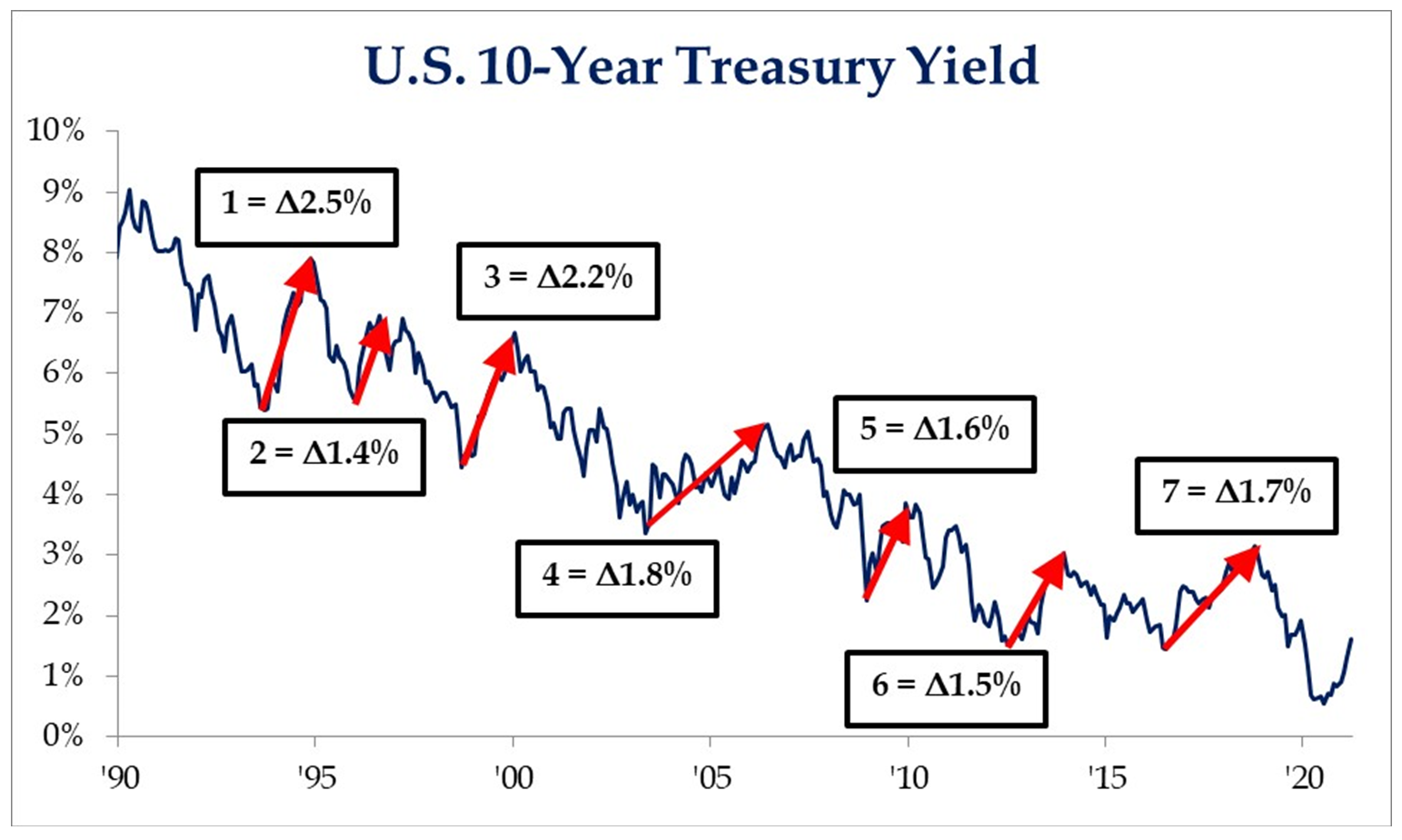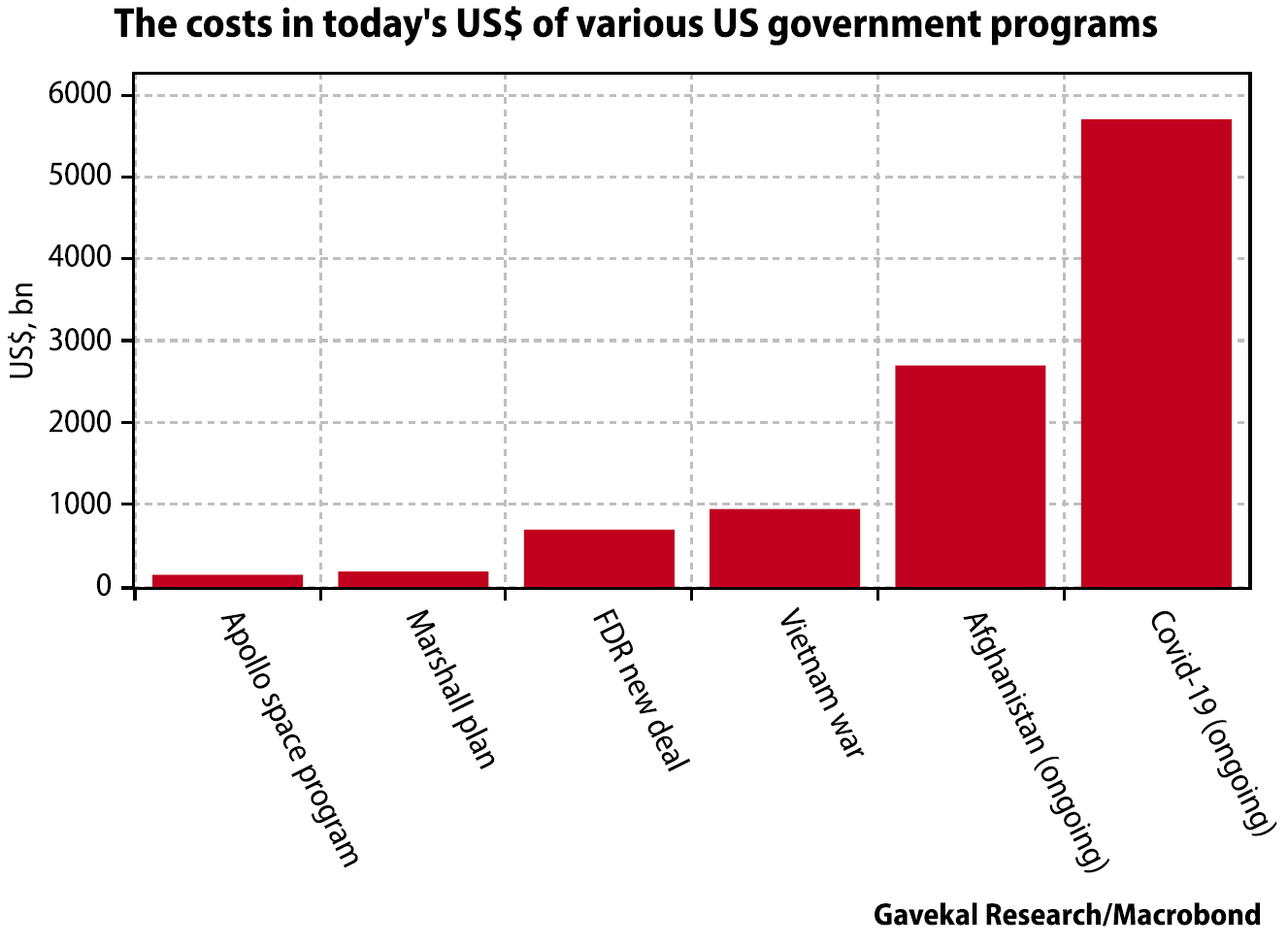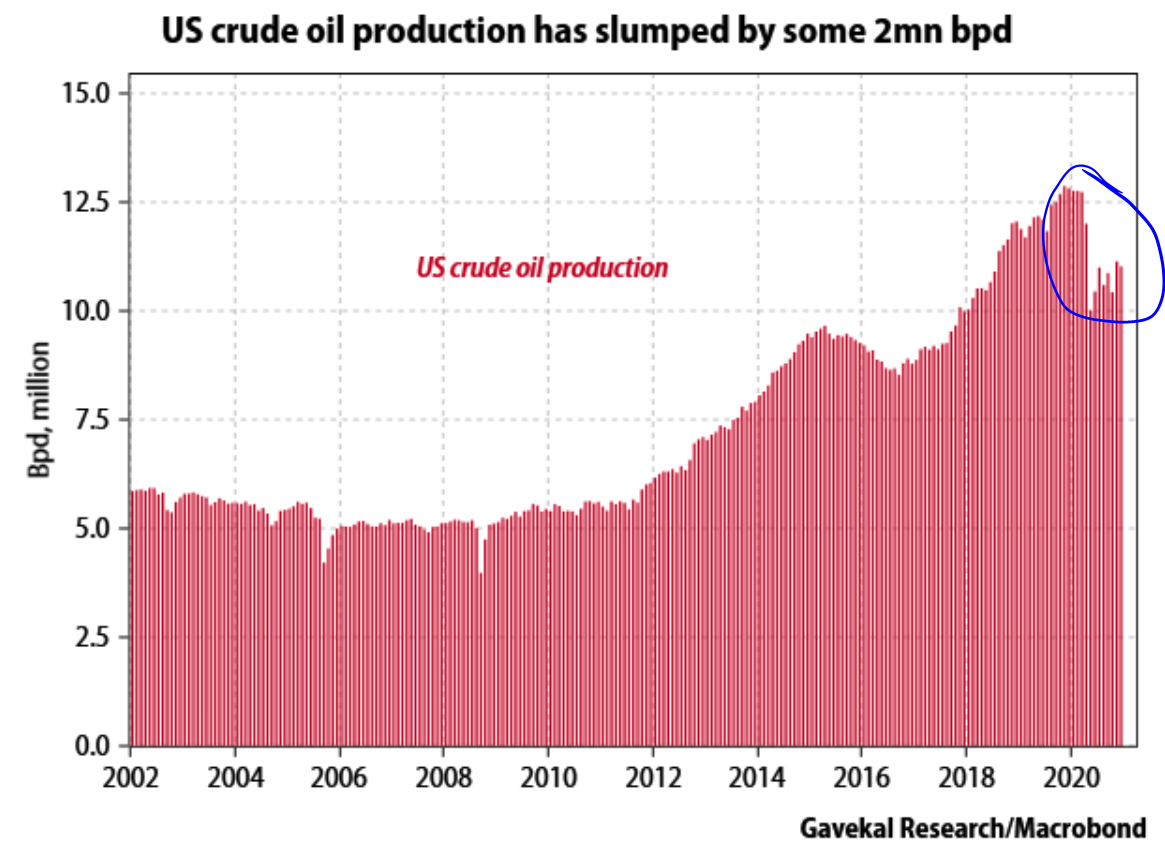Dear Valued Clients and Friends,
I had fun writing this week’s Dividend Cafe because I got to jump all over the place, just covering so many topics that I love, love, love, and not worrying at all about how it all weaved together. If you want a better understanding of the present state of the equity landscape, this is a good Dividend Cafe for you. If you want a realistic assessment of the risk of correction, this is a good Dividend Cafe for you. If you want to know what to make of higher bond yields, this is a good Dividend Cafe for you. And if you want more clarity on what the Fed is doing and not doing, this is a good Dividend Cafe for you.
Bottom line – enjoy this week’s Dividend Cafe – there is surely something in there of value for you. I hope it will be as fun to read as it was to write.
Equity Logic
I only have one problem with those who seek a logical explanation for why equity investing right here might be risky or concerning or problematic … their answers are true 100% of the time. Put differently, there are always reasons to avoid equities – there is always fear of rising rates, or fear of political risk, or fear of this, or fear of that. Always. It will never be different.
There is no need to disprove the concerns anyone may have. They are perpetual. A properly constructed portfolio is to take into account those realities from the get-go – hence the entire concept of asset allocation.
But while airwaves are filled or dinner table conversations filled or email inboxes filled with profound tales of a 1.7% ten-year bond and the brand new news that governments spend a lot of money, let’s evaluate why Dow 33,000 and the current robust environment of equity investing is maybe not quite the head-scratcher so many seem to think it is.
(1) The catalysts to bear markets and severe market corrections are recessions or tightening monetary conditions – not remotely on the horizon
(2) All consideration of valuation and relative opportunity is in the context of a zero interest rate policy and most accommodative monetary conditions in history
(3) Focusing on certain cherry-picked start and end dates in our timelines leads to an incomplete understanding of the lay of the land. Looking at how a stock price or index price or commodity price has done from a COVID bottom to current is perhaps not as relevant as it has done from a pre-COVID high to current. Why would the low-to-high movement be the relevant consideration?
These are the two economic facts that the bears have misunderstood through this entire ordeal, and they are hugely supportive of why risk assets have performed as they have: (a) The economy was on very, very strong footing pre-COVID; (b) The repair and recovery out of COVID has been quicker and more robust than anyone could have imagined.
Look, I would not pay the multiples being assigned to certain parts of the market. I believe certain sectors are over-valued, and others are perversely so. But for substantial aspects of the equity universe, what exists right now has always been, and always will be. And it’s been fine. Just fine.
Re-confusing the confusion I caused from my de-confusion
I wrote a Dividend Cafe a couple weeks ago that really sought to clarify some things about “money creation.” Mainly, I wanted people to understand that money does not get created by nature of M2 growth (mere money supply increase) in any practical sense. Rather, money is added to the economy (circulating) when a bank customer borrows money, resulting in a new deposit in the banking system. What happens with those dollars determines what the velocity of that money will be. New dollars (money supply) X velocity (high activity of dollars) is how we can measure inflationary impact in the economy.
We have spent nearly 13 years now of people who should have known better (and for some time now, DO know better), claiming that the mere act of the Fed buying bonds (quantitative easing) and growing their own balance sheet is the same thing as creating new money in the economy. The bottom line summary of all this intended to be practical and succinct is this:
(1) QE has plenty of damaging side-effects, we think
(2) QE is intended as a policy tool to affect rate policy and normal money fund operations (for good or for bad)
(3) But QE is not the same as money creation.
The lack of inflationary impact from QE post-GFC should humble those claiming this time it’s different. There is a breakaway “central bank experimentation” going on all over the globe. I have no desire to look upon this without concern or skepticism. But whatever is done in the analysis of central bank activity right now, precision and accuracy should be important.
Clear as mud?
One more try
Fed efforts to add liquidity, to optimize money flow operations, to incent lending, and to lower cost of borrowing – my point above is that all of these things are not the same thing as “creating money” – that until a borrower receives new deposits into their accounts and deploys them into the economy, “money” has not been created.
BUT let’s assume the Fed could create money, or the Congress could create money, etc. Let’s ignore my more technical points about what they are doing and not doing. Do we at least see the difference between creating money, and creating wealth? Do we at least appreciate that what we most need in any economic time – productivity, job creation, optimal incentives, efficient pricing of risk and reward, idea generation, competitive efficiency, higher quality of life distributed to a greater number of people, etc., etc. – that none of these things come out of the policy pen of a central banker?
In short, my view is this: The Fed does not and cannot do what most people believe they do, or are trying to do (money creation). And well on top of that, they most certainly cannot do and do not do what is really the need of the economic hour (wealth creation).
Comparing Things that Do Not Compare
We can look at the fact that the 10-year bond yield has gone up 50-60 basis points this year. And because of math, we can even say that “that represents an unprecedented 50% increase in just months.” But there is a real danger in looking at bond rate increases from these brutally low start levels vs. historical reality. In the seven periods of rising rates throughout my adult lifetime, the average rise has been +1.8% per cycle. The absolute level of increase matters, and the fact of the matter is, we are much less likely to get even an average yield move higher off of those low levels.

*Strategas Research, Daily Macro Brief, March 16, 2021
And for the record
So not only is this interest rate move not even in the ballpark of the last seven times we had a rising rate environment, but even those seven periods (diagrammed directly above) were not negative for equities! Why? Because bond yields can move higher for two reasons, and one of them is decidedly good (i.e. improving economic growth).
Huh? The thing everyone is hand-wringing over (higher bond yields hurting stock prices) is actually a good thing?
As is the case with so, so, so many things in financial markets – very often we are asking if X is good or bad for Y, when really, Y needs to know what is causing X before it can be decided.
Can higher bond yields hurt equity valuations, especially ones most sensitive to valuation correction? Certainly.
And if there are significant inflationary pressures pushing bond yields higher, does that put downward pressure on equities? Well, we may not have seen such a thing since the 1970s, but the answer is yes.
However, if bond yields move just marginally higher still, to far, far, far sub-historical average levels, and do so because of growing economic metrics, growing revenues, growing trade, growing activity, growing production, growing profits, basically – growing growth – that is a bullish mark for equities, and needs to be understood that way.
Truth be told
House prices escalated for many years with rates many multiples higher than they are now. The tech boom came about with competitive bond yields significantly higher than they are now. For the bulk of history, stock prices have performed well up against a bond market that offered far, far more competition than this one is close to offering.
The DIRECTION of yields matter. The REASON for movement matters. But the obsession over how a ten-year bond yield at either 2.1% or 1.7% will impact stocks is simply incoherent.
Higher yields than zero are a good thing in a functional society. Yields around zero are a bad thing. Because they point to a dysfunctional society, this should not be so hard.
Pretty soon you’re talking about real money
It is a little hard for me to believe these expenditures are reflected in inflation-adjusted dollars, but indeed, they are. One calendar year and three spending bills from Congress gave us the cost below for COVID (federal outlays only) … Seen compared to other major government endeavors in the last fifty years, it really puts things into perspective.

A risk no one thinks about until it matters
One of the key tenets driving our Operation Magnify in late 2020 was the fact that traditional “boring bonds” (for our purposes, we can use Treasury Bonds as the surrogate here) would no longer offer the same “equity risk hedge” that they had offered, well, forever. Magnify highlighted a lot of key issues in portfolio construction that needed to be thought about from the perspective of our philosophical commitments. The need for greater alternatives. Where more illiquidity could fit and help. Making sure one’s risk budget was not being depleted by Income Enhancement strategies or Growth Enhancement strategies where income enhancement or growth enhancement were not needed. Bifurcating the use of Credit from Boring Bonds. Etc. Etc.
But out of all those “Magnify” considerations, one that I believe is a universal factoid not remotely dealt with by financial markets is this:
What big, liquid, accessible, transparent, readily available asset class exists out there for a risk investor to hedge their risk?
People are lying to themselves, lying about history, and wildly speculating about the future, if they say Gold. And shorting the stock market is not a hedge against risk; it is just creating a different risk (one with more volatility, more carry cost, and less probability of success, I might add).
Treasury bonds have been the asset class that, for over a century, could draw capital during flights to safety, pay a par value back at maturity, offer a carry premium (coupon) on top, and do so devoid of credit risk. Investors worked the duration risk into the calculation, but the preservation of value with other benefits served the purpose of being the ultimate equity risk hedge vehicle, not as a loss leader, but as something that would make money while doing so.
The zero bound interest rate policy has taken away the ability of Treasuries to (a) Make investors money via a positive coupon, and (b) Hedge equity risk by appreciating in value when rates decline at times of severe distress.
The question facing financial markets is: Will investors accept as the default equity risk hedge an instrument that offers no positive carry, and no hedge appreciation offset in times of distress, just to get the capital preservation? If so, it is a weakened instrument. But if not, will the surrogate be another country’s sovereign debt? And if so, which one?
Not if but when
I believe there continues to be a sort of odd approach to fear of market drawdowns where many investors are saying, “what if the market suffers a correction” – as if this is hypothetical, or possible, or theoretical – and not assured, historical, and inevitable. If we look at a drawdown/correction as a 10% move lower, we have had 36 of these in the last 70 years, or one every other year. Since the vast majority of the last 70 years have been spent (with a couple extended and challenging exceptions) in a secular bull market, it stands to reason that we frequently have ~10%+ market corrections in the middle of bull markets. They are the rule, not the exception.
The “tail risk” events that have brought sudden and violent market swoons (COVID, 9/11, 1987 crash) are one form of investor discomfort.
Recessionary bear markets are another form of especially tough investor discomfort (tech crash, financial crisis).
But the 5-15% range of market pullbacks, drawdowns, corrections, and re-pricings are inevitable. And as I have argued for years, if not decades, offering reason upon reason, they are a glorious and entirely useful thing for investors.
On the other side of all of this
Just as I believe one needs to look at the total movements in prices and economic metrics from well before COVID to present tense, one also needs to replace the “COVID risks” with the “pre-COVID risks” (or at least “pre-COVID questions”) at some point in time. Everyone has been so focused for so long (understandably) on things like blow-out unemployment, collapsing travel, shut down restaurants, and all the other carnage from the COVID lockdown year that we haven’t really had to focus for quite some time on pre-February 2020 conversations. Does any of this sound familiar?
(1) What will be the fate of the U.S. tariffs on Chinese imports added in 2018 and 2019?
(2) Is China complying with the terms of the U.S. trade deal?
and then this one at the top of my list …
(3) Is business investment coming back so as to extend innings in this economic expansion?
Business confidence, leading to the capital expenditures that flow from business investment into greater growth, greater productivity, and the necessary engines of innovation and progress.
That was the instrumental unknown economic factor of the world pre-COVID, and I believe it will be again post-COVID.
Chart of the Week
It stands to reason that U.S. oil producers like $65/oil more than $35/oil, and can make more money at these levels than last year’s levels. And that is all perfectly true. But it only deals with one variable, and it is the other that we need to better understand. What hurts oil producers the most about low prices is not just the obvious aspect of eroded profit margins; it is the inevitable decline in production that follows. Low prices mean low margins; low production means low volume on those low margins – a perfectly awful scenario.
So has everything reached peak recovery in bliss in the upstream energy sector? It has not, for one simple reason.

If CURRENT prices were being met with FORMER production levels (the 12.5 million barrels per day of 2019), it would be utter nirvana for the energy sector. But 2020 production cuts have taken ~2 million barrels per day offline, and that means higher margins being offered right now on lower volumes of business.
My point? The cost of production shutdown is high, and lasting. The ability to get energy production back in line, once demand validates the need to do so, will be pivotal.
Quote of the Week
“Complaining really amounts to people wishing there was a bigger market for being mediocre.”
~ Darren Doane
* * *
Twenty years ago tonight (March 19, 2001) I proposed to my girlfriend, Joleen Green. We can see the cliff in Newport from where I proposed from our new home on Newport Island. You likely know that she said yes to my proposal, and the rest is history. I spend too much time in these pages reminiscing about the anniversary moments of key market crashes and geopolitical debacles, and not enough time reminiscing about the truly special moments in our lives. Joleen accepting my proposal and becoming Joleen Bahnsen tops all the lists of all the special moments. And later in the year when we flee the country for our actual 20-year wedding anniversary, I will not be writing the Dividend Cafe that week. =)
Have a wonderful weekend yourself, filled with buzzer-beaters, bracket glory, and special moments. And reach out with any questions/comments, any time.
With regards,
David L. Bahnsen
Chief Investment Officer, Managing Partner
The Bahnsen Group
www.thebahnsengroup.com
This week’s Dividend Cafe features research from S&P, Baird, Barclays, Goldman Sachs, and the IRN research platform of FactSet












